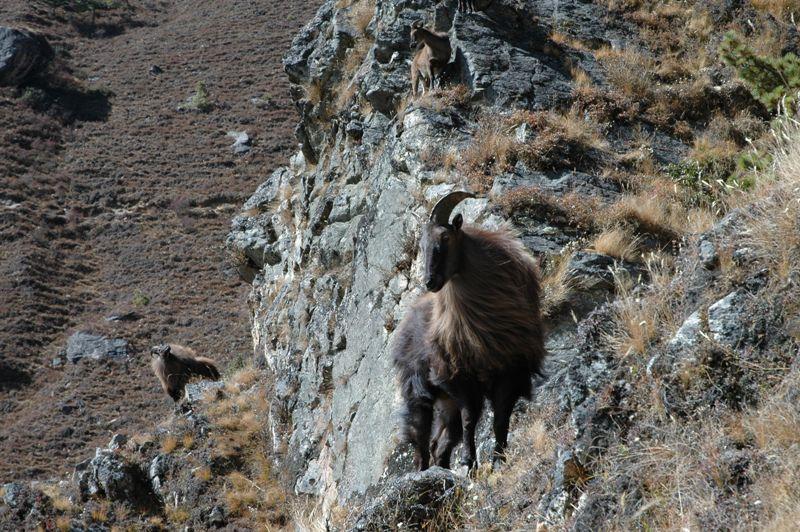Som Ale
Other projects
12 Oct 2005
Ecology and Conservation of the Snow Leopard and the Himalayan Tahr in Mt. Everest National Park in Nepal
This ambitious, long-term project deals with snow leopards in habitats outside Nepal’s protected areas to design viable corridors that connect country’s mountain protected areas harbouring snow leopards. We will begin our work with Rolwaling that connects Sagarmatha (Mt. Everest) and Langtang parks, and together they form the “Everest–complex”, one of the three important land-clusters, identified by Nepal Government, for the long-term conservation of snow leopards.

Himalayan tahr.
Although the snow leopard’s permanent return to the top of the world, in the early 2000s, from Tibet, is encouraging, it raises several management-questions. Will this re-established population serve as source for re-colonizing adjacent areas, such as Rolwaling, outside the park? Are these remote highlands adjacent to the park suitable for dispersing snow leopards? Anecdotal reports from villagers and herders indicate that snow leopards from Sagarmatha are travelling to adjoining valleys. We know very little about snow leopards in these potential habitat-corridor areas.
We will assess snow leopard status, distribution and dispersal routes across Nepal’s habitat-corridors. Because no protected areas in Nepal are large enough in themselves to contain viable snow leopard populations, it is important to maintain landscape integrity. The current conservation strategies, therefore, call for protecting habitats within and outside of protected areas. Our project addresses this.
Conservation of snow leopards poses constant challenges, and often conflicts with human land-use practices, especially animal husbandry. This project will identify the best locales and dispersal routes for management interventions. The project will help establish and initiate pilot conservation initiatives, with assistance from the Snow Leopard Conservancy and its partners, in villages in snow leopard “hot spots”. Our aim is to establish “snow leopard-friendly communities” along such corridors.